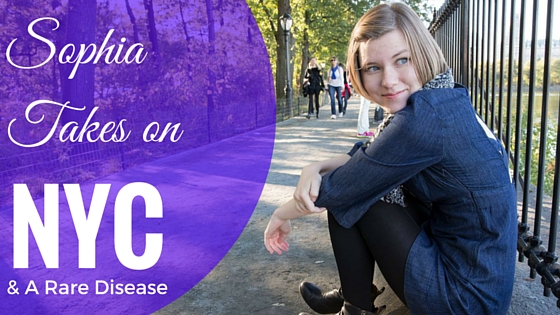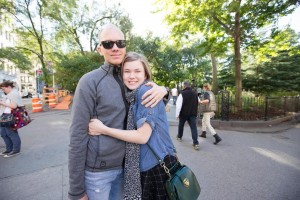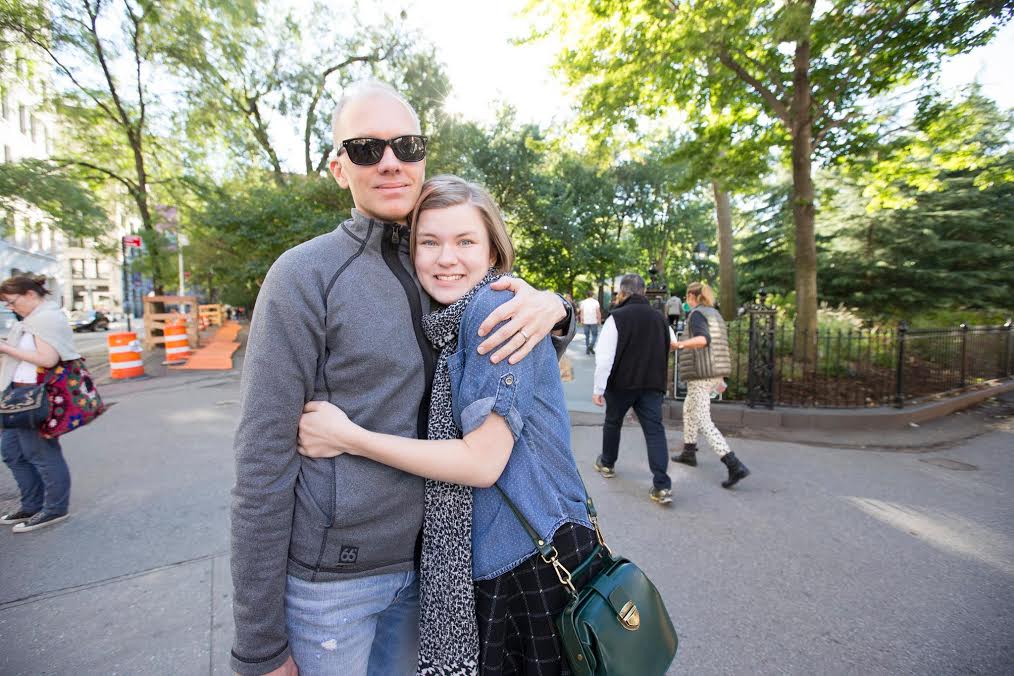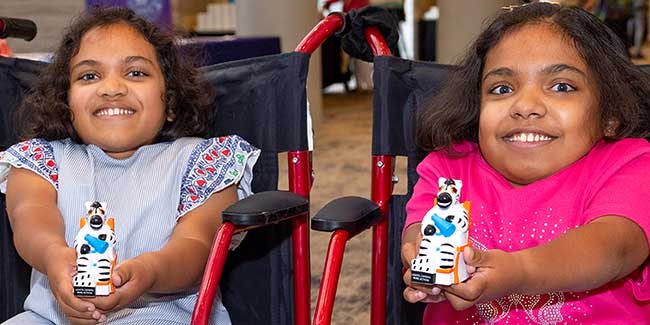
Sophia Hanson is a college student and has the rare disease, Lymphedema. She is writing for NORD about the balancing act of going to college, moving away from home, and managing a rare disease.

My name is Sophia Hanson. I am currently a freshman at New York University. I grew up in Iowa the only child of two fantastic parents. I have been writing since I was eight years old, and am about to publish my first novel. I also have primary lymphedema.
Lymphedema is a medical condition that causes extreme swelling in the body. It can affect the limbs, torso, face, and genitals. It can be managed, but there is no cure. Lymphedema is permanent, and tends to worsen with age. The cosmetic issues aside the condition causes pain, infections like cellulitis, and in some cases, can lead to disability. Though it is rare, there are some patients who have died from complications brought on by the disorder.
Lymphedema has multiple forms, which I will discuss in a later post, but is generally partitioned into two categories: primary and secondary. Primary patients are saddled with the disorder at a seemingly random point in their life.
My lymphedema showed up like an unwelcome guest one night after track practice. I was fifteen years old, a freshman at a boarding school in Chicago. I was sitting at my desk, my hair and clothes stale with early summer sweat, when I noticed a tightness in my left ankle. I peered down, my eyebrows knit in confusion. My breath froze in my lungs.
My ankle had ballooned to several times its size. The plump skin spilled over the edge of my sneaker, pale and fat. I texted my mother (a pediatrician) immediately. She called and asked me if I had sprained it. I wracked my brains, but could think of nothing. I iced and elevated it as she instructed, hoping it would calm down the next morning.
When I awoke, it was even worse. Tender to the touch, and even more swollen. I limped through class and practice, waving off my classmates and coaches. I was sure the bizarre lump I once called my foot would soon release its bated breath.
As the weeks progressed, the fluid in my ankle calcified. It felt like a lumpy cast beneath my skin, as if it was actually made of plastic or tough rubber. Nothing could curb the swelling. I went home for the summer without answers.

It took six months, five doctors, three MRIs, a cast, and a vast array of medical tests to diagnose my lymphedema. It was my mother and her partner at her clinic who figured it out. At first, I was relieved to have a label for my strange affliction. I was given compression garments, which I wore begrudgingly. They were hot and scratchy in the summer heat, but the swelling in my ankle receded considerably. Still, each time I removed the garment, the swelling came crawling back. The root of the problem was still there.
I think a part of me assumed this bizarre disease would eventually go away. I knew logically that the edema was permanent, but I did not want to think about it. I refused to think about it.
It was my mom who pulled me out of my denial. I remember sitting on the floor of my room the night before I was to leave for the start of term, my mother kneeling next to me. She further explained the mechanics of the disorder, the seriousness of it. The fact that if it went untreated it would swallow me up. That even if it was managed it might get worse.
I fell into a deep depression. I was terrified. I began to research lymphedema constantly, which was in some ways the worst thing I could have done. If you Google ‘lymphedema’ the first thing that pops up is a magnificent collection of all the worst cases. The patients with elephantiasis, cellulitis, open wounds. The ones who can barely walk their legs are so swollen. My own leg looked fairly normal. The garment was doing its job. My ankle was swollen, sure, but not mammoth. I could pass as normal, but how long would that last? How long before it ballooned, or spread from my leg to my stomach, my genitals, my arms, my face? It was a waiting game, and I was losing.
I did not start to improve mentally until I visited the Foldi Clinic in Germany. Foldi is a hospital dedicated specifically to treating lymphedema patients. It is perched on a mountaintop deep in the Black Forest and looks out over the beatific village of Hinterzarten. Honestly, I could not imagine a more idyllic place to be treated for a chronic disorder.
I had the privilege of staying at Foldi for two weeks the winter of my sophomore year. The intense therapy allowed me to shed half a liter of fluid from my left leg. From afar, my legs were almost indistinguishable. I was fitted for custom compression garments that would help hold these gains in place.
This was all wonderful, but the biggest change was in my own mind.
When I was first diagnosed, I thought I was destined to be disabled and disfigured by the time I was thirty. I learned this was not the case. I met many thirty, forty, and even eighty year olds who had battled lymphedema for decades and yet managed to lead full, relatively normal lives. I could finally breathe again.
I would be okay.
I have been living with lymphedema for almost five years. It is difficult. It is tiring. It will never leave me alone. But it is also manageable. I am ruthless in my self-care. I am in the best physical shape of my life, and am loving college in the city that never sleeps.
A lot of people have told me that everything happens for a reason, which I find ridiculous. There is no divine purpose or punishment hiding behind any disease or disorder, rare or common, mental or physical. There is no grace in our afflictions, but there is grace in how we handle them. There is power in the way we heave ourselves up and tread on.
Love,
Sophia





